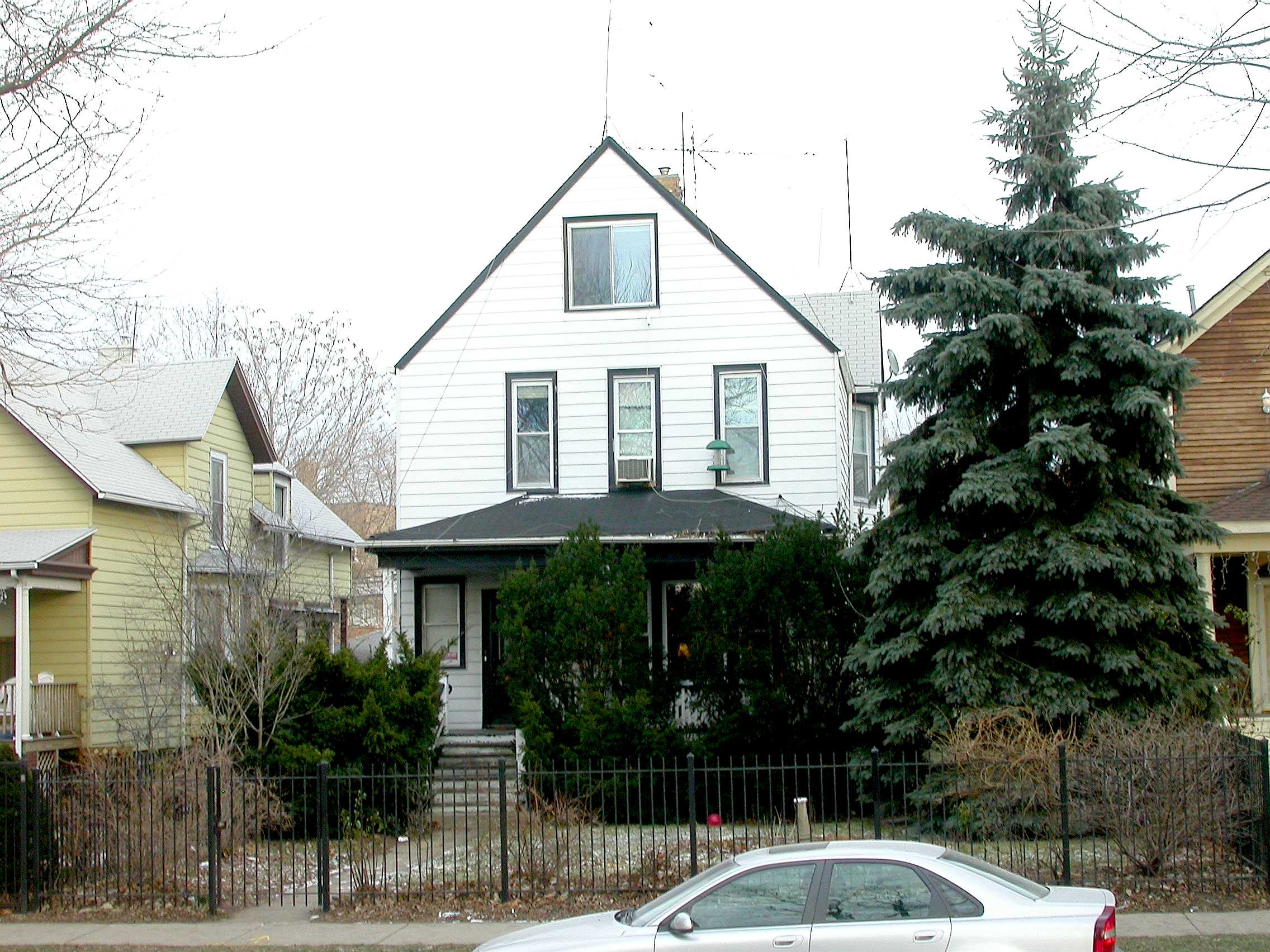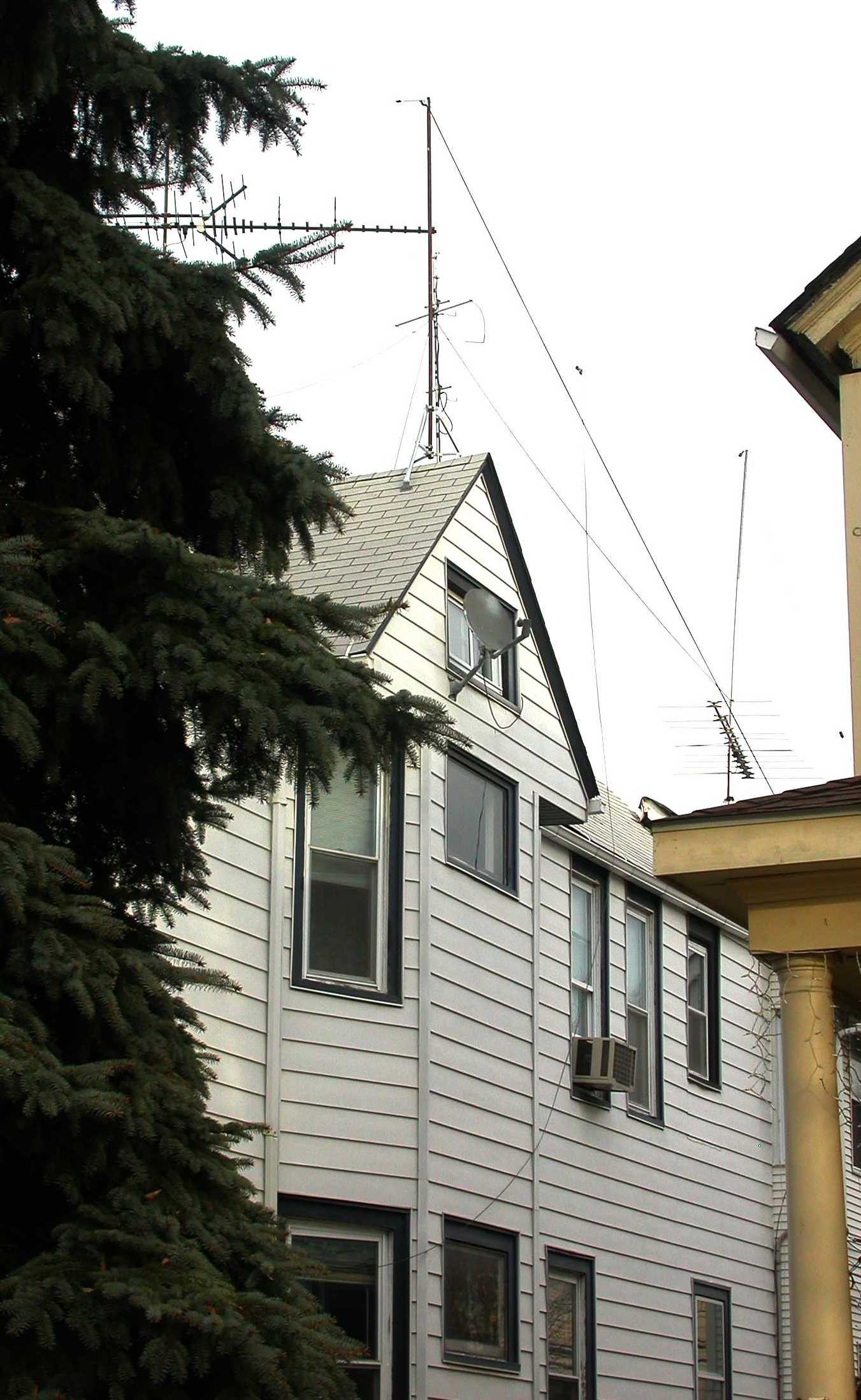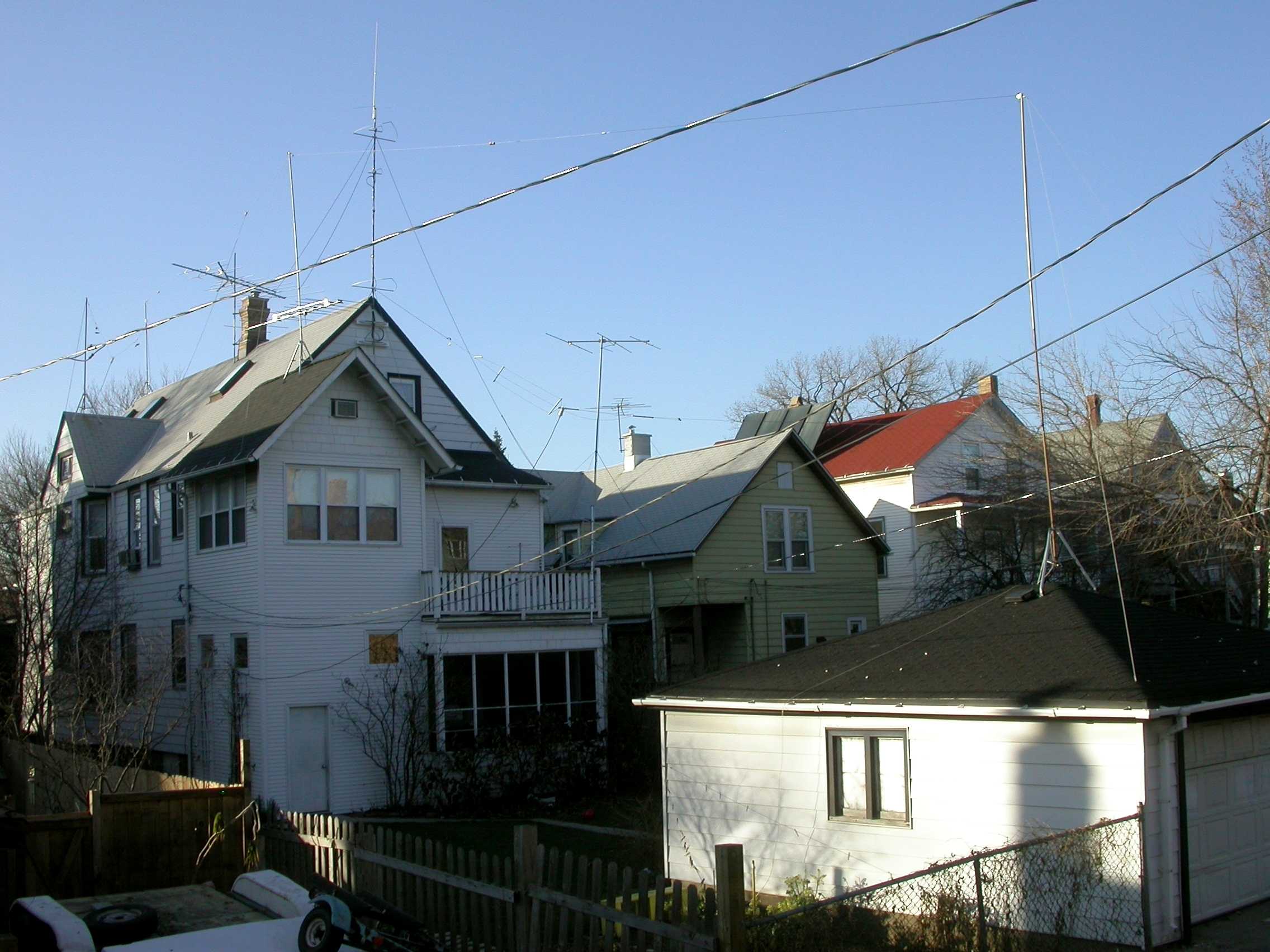

My Chicago QTH was in a residential neighborhood. About twelve years ago, I installed a wrought iron fence that was the key to the success of this antenna. It's about five feet high, and 135 linear feet in length, wrapping back to the front of the house on the north (left) side and to the neighbor's house on the south (right) side. #8 copper runs from the station ground to both sides of the fence. The ham shack was just inside the window with the ugly green bird feeder.

The "obvious" part of this antenna was a conventional trap dipole for 80 and 40 meters, built of components that allowed me to load the feedline as a long wire on 80 and 160 meters. The feedline was a length of vintage Belden 8210 (75 ohm KW Twinlead) that I was lucky to find at a hamfest at least 20 years ago. This allowed me to put the balun in the shack when I ran the antenna as a conventional dipole. The feedline can be seen running just to the left of the window-mounted air condtioner. To load it as a long wire, I tied the two sides of the line together and connected it to my TenTec 229B tuner. The horizontal sections of the dipole acted as something between an extension of the long wire and a capacity hat to load the vertical section.
This antenna is nothing new -- it is essentially an improvised version of one shown in W8JK's classic text "Antennas For All Applications ",by John Kraus and Ron Marhefka, 3rd Edition, McGraw-Hill, 2002. See Figure 21-1b and the associated analysis. Note that in Kraus's example, the operating frequency is 100 kHz, and the vertical section is 150m. The analysis shows that the efficiency is equal to the radiation resistance divided by the sum of the radiation resistance and the series equivalent loss resistance. For all practical purposes, the loss is equal to the wire resistance plus the resistance of the ground (or counterpoise) system, and the radiation resistance increases with the length of the antenna. Or, putting it most simply, the better the ground system and the longer the antenna, the better it works.

A 10 ft TV mast, (guyed to the front porch) supported one end of the 80/40 meter dipole. The mast on the garage roof supported the other end. The horizontal section of this antenna was roughly 45 ft high at the front of the house, sloping down to about 40 ft where it tied to the garage. The traps were loading coils that resonate with their own capacitance, and were built by Barry, KU3X,. He sells them on the internet as the HyPower Antenna Company.
How well did it work? With 700 watts, I could pretty much work what I could hear on 80 and 160. In a 160 contest not long before I movede to CA, I worked the lower 48 states. I was working the west coast pretty easily, and managed several DX QSO's into the Carribbean. On the other hand, the only signals I heard from outside North America on 160 were a CT3 and a CU8. On 80, the loaded long wire seemed to be roughly equivalent loading the same wire loaded as a dipole in directions that were broadside to the dipole, and at least 2 S-units better than the dipole in directions that were more or less off the end of the dipole (AZ, CA, WA), and I was heard better than I heard others (thanks to my high noise level). I tried the top-loaded configuration on 40, but it didn't work nearly as well there -- the dipole worked far better.
To see the rest of the old K9YC Chicago antenna farm, follow this link. You CAN Have a Good Time With Simple Antennas!.